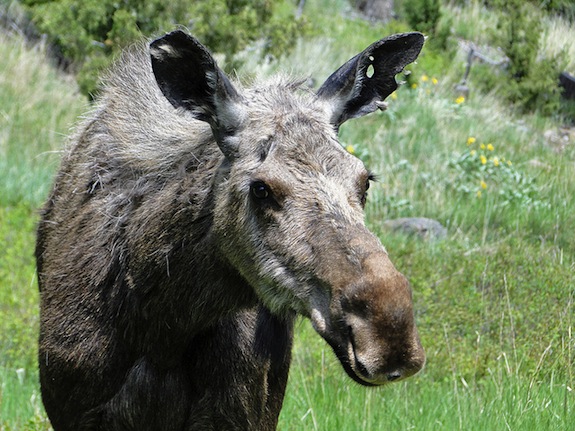Why Are Norway’s Moose Balding?
Moose are some of the most majestic creatures around, and now they’re going bald

Image: Powhusku
Moose are some of the most majestic creatures around. They’re the largest of the deer family, with huge antlers and quite ornery personalities. But the moose of this world are struggling a bit. In Minnesota, they’re falling to wolves. And over in Europe (where they’re called Eurasian elk), they’re balding.
In 2007, people started noticing that Norway’s moose were looking a little bit ratty. They seemed to be losing their hair. And eventually a veterinarian figured out what it was: a parasite called deer keds. OnEarth’s Jason Bittel explains why this is not great news:
Deer keds drink blood. To get it, the insects crawl out of the ground and fly onto nearby hosts, most commonly moose and deer. Once they find a cozy home, they discard their wings and chow down for a while. They then strike up conversations with other deer keds on the host —“You engorge here often?”—and start mating. Unlike most other creepy crawlies, deer keds produce just one larva at a time, which would be sort of adorable if the larva didn’t immediately dig into the moose’s skin for a blood meal. Once the larva pupates, it hops off the animal and holes up in the soil where someday it, too, will turn into a winged adult. It’s all very circle-of-life-ish—you know, if The Lion King were a vampire flick.
But while human hair loss is annoying and sort of embarrassing, hair loss in moose can actually be a serious problem. Moose live in places that are really, really cold. Their hair is what keeps them insulated, and without it they could freeze to death. Of course, the unusually warmer temperatures that kept those mangy moose alive are probably also what allowed the deer ked pupae to survive through the winter, says one study. That study also includes a really great illustration of the balding patterns of moose (unlike humans moose seem to bald from the bottom up, not the top down).
More from Smithsonian.com:
/https://tf-cmsv2-smithsonianmag-media.s3.amazonaws.com/accounts/headshot/Rose-Eveleth-240.jpg)
/https://tf-cmsv2-smithsonianmag-media.s3.amazonaws.com/accounts/headshot/Rose-Eveleth-240.jpg)